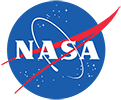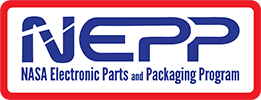

|
| ||||||||||||||||||||||
|
Home | NASA Parts Selection List (NPSL) | 4.0 General Requirements |
|
Parts Selection Table of Contents
Other Space Agency European Space Agency (ESA) Japan Aerospace Exploration Agency
(JAXA) |
NASA Parts Selection List
Selection of parts for inclusion in the device listings in this document is based on a review of technical data by the NASA EEE Parts Assurance Group (NEPAG) for quality and reliability trends. The major criteria used to evaluate candidate parts are:
Participation by the manufacturers in a quality program such as QPL, QML, and ISO 9000. will not automatically qualify their products for listing in the NPSL. Listings will be based on results from assessments of all the major criteria listed above. EEE parts-related activities throughout NASA provide recommendations for listing parts in this document. NOTE:
Unless specifically stated within the parts selection tables of the NPSL,
listing of a device technology herein does NOT imply/guarantee Radiation
Hardness Assurance (RHA). Applications concerned with a device's ability to
tolerate exposure to various forms of space radiation (e.g., total ionizing
dose, single event effects, etc.) should be reviewed and have the device
assessed by the Program's radiation assurance experts. The following
resources may also be consulted for initial guidance: The NPSL lists products based on three quality levels defined by NEPAG: Level 1, Level 2, and Level 3. The definitions for each Level and the criteria used to list a part in a particular Level are not part approvals nor is this document a project approved parts list. The NPSL will not provide information on whether or not a part meets individual project flight requirements. Instead, it provides a list of products and associated manufacturers that meet recognized quality assurance baselines, qualification test regimens, and screening requirements necessary for space flight acceptance based on levels of risk. The part selected must be assessed independently by the project or the NASA center or OEM's parts organization to determine if it meets the requirements for the project. The parts engineering organizations at the NASA centers will assist users in making this determination. The Levels herein are not directly related to mission classification, cost, or schedule and users should make the appropriate Level tradeoffs when considering which parts to choose from the list. 4.1.1 Level 1: Level 1 is the highest product assurance class assigned to parts listed in this document. Level 1 parts are those produced under assurance classes recognized by NASA as providing the highest possible level of quality and reliability (e.g. QML Class V & K, JANS for discrete semiconductors, QPL Class S, Failure Rate Level (FRL) S), from NASA approved manufacturing sources, and meeting NASA space level parts and packaging program assessment criteria. The technical assessment results for Level 1 products will show that no known trends exist which have a negative impact on the quality, reliability, or performance for space flight applications. The Level 1 criteria is summarized as follows:
4.1.2 Level 2: Level 2 is the second highest product assurance class assigned to parts listed in this document. Level 2 parts are those produced under assurance classes recognized by NASA to have a high level of quality and reliability (e.g. QML Q & H, QPL Class B, JANTXV for discrete semiconductors, FRL R or P), from NASA approved manufacturing sources, and meeting NASA space level parts and packaging program assessment criteria. The Level 2 criteria is summarized as follows:
4.1.3 Level 3: Level 3 is the minimum product assurance class assigned to parts listed in this document. Level 3 contains many advanced electronic functions (from a space flight applications standpoint) and has been created to provide a technology insertion path into NASA flight projects. Parts listed are those produced by reputable manufacturers under a recognized quality assurance system (QML, QPL, ISO 9000) or their equivalent. Typically, only a limited amount of information is available to NEPAG for these parts and NASA has minimal visibility into the manufacturing and testing of Level 3 product. The parts are usually available commercially and have the capability to be used in space applications. The intent of Level 3 listings is to provide products that are newer, have greater functionality and enhanced performance characteristics, and provide higher levels of integration. Because the product has little or no heritage in space flight application and data is unavailable or scarce, these parts are considered higher risk than the Level 1 and Level 2 parts. While the price of these parts may be less than the traditional Levels, more engineering evaluation may be needed to qualify the part for the project's application. The overall reliability and cost of ownership should be considered when selecting these parts. The Level 3 criteria is summarized as follows:
NEPAG recommends selecting a Level
3 product when a higher Level part does not exist and/or enhanced functionality
is required to meet system design requirements. Parts in this Level are not
recommended for use in mission critical applications. Selecting these parts
may require further engineering evaluation and approval by the project, but
some heritage exists. Additionally, having more projects use these parts
helps NEPAG acquire the technical data necessary for moving the parts into
the higher Levels.
|
|
|
| NEPP Program Manager: | Peter Majewicz |
| Responsible NASA Official: | Peter Majewicz, NEPAG Manager |
| Website Comments: | Web Development Team |
| Last Modified: | February 1, 2016 |